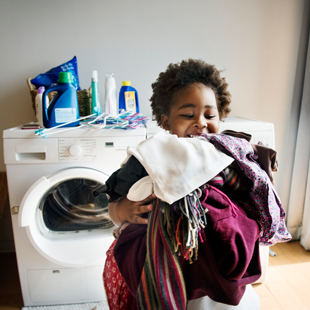“We hold these truths to be self-evident, that all men are created equal,” begins the Declaration of Independence. Today, it is generally agreed that “men” means all men and women, though that has not been a reality for many citizens in the history of our United States. Clearly the indigenous peoples of the Americas have not been treated equally. Nor have African Americans: slavery was not abolished until the 13th amendment to the U.S. Constitution was ratified in 1865. Women did not have the right to vote until the 19th amendment was ratified in 1920.
Practice democratic equality at home by modeling equality in gender roles. In The Better World Handbook: From Good Intentions to Everyday Actions, authors Ellis Jones, Ross Henfler, and Brian Klocke point out that dividing up household work and decision-making based on gender can “prevent boys and girls from becoming whole people who can express a broad range of emotions and succeed at a broad range of tasks.” Accordingly, they recommend that parents:
- demonstrate that it’s okay for both women and men to show emotions;
- trade off on household tasks;
- show that both men and women can make big decisions;
- teach boys how to cook, clean, and do laundry; teach girls how to do home repairs and auto maintenance; and
- encourage children to value and engage in a variety of activities rather than gender-specific play.
